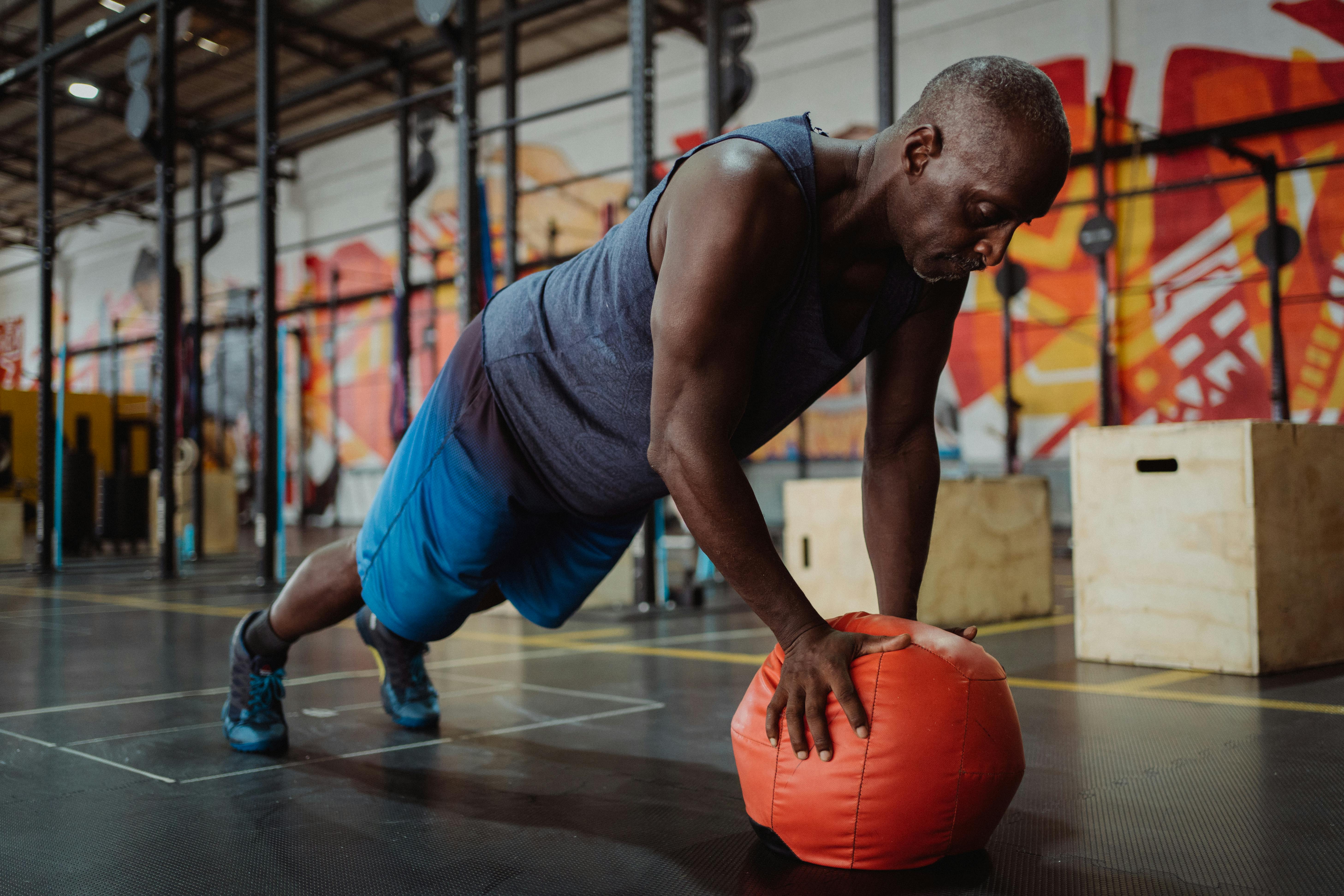Effective Ways to Optimize Your Weekly Chest Workout in 2025
Essential Guide to Brusttraining for Optimal Muscle Growth
Brusttraining, or chest training, is a fundamental component of any comprehensive workout routine, especially for those looking to build strength, enhance muscle definition, and achieve overall fitness goals. The proper approach to Brustmuskeln workouts can lead to significant muscle hypertrophy, improving both physical appearance and performance. Understanding the optimal frequency and the right exercises can elevate your training experience, ensuring you get the most out of each session.
In 2025, fitness methodologies have evolved, incorporating advanced techniques and technologies that can refine your training regimen. This article explores effective strategies to optimize your weekly chest workouts, delving into aspects like training volume, exercise selection, and recovery methods. You will also learn how to shape your exercise routines to align with your fitness objectives, maximizing your training intensity and effectiveness.
Key takeaways from this guide include practical training tips, common mistakes to avoid, and expert recommendations for achieving better results in your fitness journey. With the right mindset and approach, you can elevate your Brusttraining to new heights.

How to Set Your Training Frequency for Best Results
Setting the optimal training frequency is crucial for muscle recovery and growth. Although many fitness enthusiasts may believe that more is better, the frequency of your Brusttraining sessions should depend on your individual fitness level, ability to recover, and workout intensity. Scientific studies suggest that training each muscle group twice a week can yield optimal hypertrophy without risking overtraining.
Moreover, considering your training goals—be it maximizing strength, building muscle, or enhancing endurance—will also influence your workout frequency. Advanced lifters might benefit from splitting their chest workouts into different styles, focusing on strength variations one day and endurance or hypertrophy the next. To maintain a well-rounded fitness program, integrate varied chest exercises like push-ups, bankdrücken (bench press), and Dips, targeting the Brustmuskeln effectively.
Building on that foundation, you should assess your body’s response to different training frequencies, adjusting your schedule based on your recovery times and muscle soreness. Incorporating comprehensive warm-up and cooldown sessions will further aid recovery, ensuring you return to your workouts enthusiasm and strength.
Identify Your Personal Training Goals
Establishing clear fitness goals is integral to optimizing your workout. Each individual may aim for different outcomes, such as improving muscle hypertrophy, enhancing strength, or attaining specific performance targets. Clearly defined goals will guide your choice of exercises, volume, and intensity. Utilizing a fitness tracker can help you stay motivated and monitor progress, allowing you to make necessary adjustments to your routine based on real-time feedback.
Integrate Variation in Your Routines
Incorporating training variations is vital for avoiding plateaus and keeping your workouts engaging. Periodically altering exercises, such as switching from traditional Brustpresse to Kurzhanteln presses or adding a wider grip on the bar can provide new challenges for the muscles. Experiment with utilizing different equipment, like Widerstandsband (resistance bands) and bodyweight exercises, to amplify your training experience.
Monitor Recovery and Rest Periods
Understanding the significance of recovery and rest holds the same value as the workout intensity itself. Taking adequate rest days and allowing your body to recuperate is essential to prevent injuries and promote muscle growth. Paul Bauman, a personal trainer, emphasizes the importance of “listening to your body.” If muscle soreness indicates that your body needs more recovery time, do not hesitate to take an extra day off.
Maximizing Volume and Intensity for Muscle Definition
As you strive for significant muscle definition, being mindful of your training volume and intensity becomes increasingly important. Volume, measured by the total number of sets and repetitions, plays a critical role in promoting hypertrophy and achieving fitness goals. Recent research indicates that higher training volumes with moderate weights lead to increased muscle size compared to low volume with high weights.
Incorporating compound exercises such as Bankdrücken and Liegen Brustpresse effectively targets various parts of the Brustmuskeln while boosting overall endurance. To achieve the desired intensity, concentrate on optimizing the Schnelligkeit der Übungen (speed of exercises) and ensure that you maintain proper form throughout. Focusing on the quality of each repetition and lengthening the time under tension can force the muscles to adapt and grow.
Implementing Supersets and Drop Sets
Supersets and drop sets are powerful techniques to enhance training intensity, thus boosting results. A superset involves performing two exercises back-to-back without rest, targeting different muscle groups or the same muscles differently. Drop sets entail starting with a heavier weight and gradually decreasing it as fatigue sets in, forcing muscle fibers to engage long after they would typically stop. These approaches elongate muscle engagement during the workout and foster hypertrophy effectively.
Incorporate Proper Warm-Up and Cooldown Techniques
A well-structured warm-up and cooldown routine is essential for any effective workout regime. Incorporating dynamic stretching before you begin your Brusttraining helps to improve blood circulation and prepares muscles for the stress they’ll undergo. Post-training, it’s crucial to implement a cooldown consisting of static stretching, which aids muscle recovery and alleviates soreness, helping to maintain flexibility and range of motion over time.
Enhancing Your Честный Ответы на Вопросы
Tailoring your antwoord to specific questions posed during training sessions, such as “How long should I rest between sets?” or “What’s the significance of hydration during workouts?” encourages constructive dialogues within your workout routines. Addressing these queries not only aids your understanding of effective training but also fosters a sense of community and shared learning among fellow fitness enthusiasts.

Nutrition and Recovery: Fueling Your Chest Workouts
No workout routine is complete without considering nutrition and recovery. Sporternährung is essential for maximizing your Fortschritt and ensuring effective recovery post-workout. Proper hydration before, during, and after your workouts is critical; it can impact your performance and energy levels. Moreover, it’s vital to consume a balanced diet comprised of protein, carbohydrates, and healthy fats to support muscle recovery and growth.
Post-workout nutrition should include a quality source of protein—preferably within 30 minutes of your workout. This helps replenish glycogen stores and initiates the muscle repair process. Moreover, staying updated with nutrition tips from fitness blogs and trainers can help you optimize your meal plans further. Supplements, when chosen wisely, can benefit muscle recovery and growth, providing that extra boost when needed.
Integrating Supplements for Enhanced Performance
Incorporating supplements can be highly beneficial, particularly for those committed to advancing their muscle-building journey. Options such as whey protein, creatine, and branched-chain amino acids (BCAAs) may assist in enhancing recovery and promoting muscle protein synthesis. However, it is crucial to consult with a healthcare professional before adding any new supplement to your routine, ensuring it aligns with your fitness goals and overall health needs.
Establishing a Sustainable Recovery Routine
Building a sustainable recovery routine is essential for long-term success in any training program. This should encompass activities such as yoga, foam rolling, and adequate sleep to facilitate muscle healing and overall well-being. Attention to mental recovery and maintaining a positive mindset also plays a role in achieving fitness goals, emphasizing the importance of balance in training and recovery.
Engaging in Social Fitness: Foster a Support Network
Participating in group fitness activities or surrounding yourself with like-minded individuals can significantly enhance your motivation and adherence to your training plan. Engaging with fitness communities, whether online or in-person, leads to sharing knowledge, experiences, and accountability among peers. Likewise, obtaining a personal trainer can facilitate your musculature journey by providing tailored guidance and expertise suited to your fitness level.
Utilizing Online Courses and Virtual Training
With fitness technology on the rise, a plethora of online courses and virtual training programs allow you to diversify your Brusttraining further and gain insights from fitness experts. These resources often provide structured workout plans and instructional videos, ensuring you perform exercises correctly and efficiently.
Participating in Community Fitness Challenges
Engaging in community fitness challenges or group classes can boost motivation levels while fostering connections with others in the fitness journey. Participating in these activities promotes a lively and competitive atmosphere while enhancing your dedication to your Brusttraining plan.
Fostering Fitness Motivation Through Feedback
Encouraging feedback loops, whether from trainers or workout partners, can drive motivation and improve training experiences. Learning how to correct techniques, solicit advice and celebrate milestones together fuels a positive training environment while elevating the overall effectiveness of your workouts.
Q&A Section: Common Questions About Optimizing Chest Workouts
What is the optimal frequency for Brusttraining?
Experts recommend training Brustmuskeln about twice a week for optimal muscle growth while allowing adequate rest in between sessions for recovery. This schedule helps to prevent overtraining while maximizing intensity during dedicated workouts.
How can I determine the right exercises for my goals?
Understand your fitness goals to choose appropriate exercises. If your aim is muscle growth, focus on compound movements like Bankdrücken and Dips, adding in isolation exercises such as Brustdehnungen for balance.
What role does nutrition play in muscle recovery?
Nutrition plays a pivotal role in muscle recovery; a balanced intake of protein-rich foods helps repair and build muscles post-exercise, while carbohydrates restore energy levels after intense workouts.
How important is hydration during workouts?
Hydration is crucial for optimal performance and recovery during workouts. Ensure adequate water intake both before and during exercise to maintain stamina and performance levels.
What are common mistakes to avoid in Brusttraining?
Common mistakes include neglecting recovery, failing to monitor form, and overtraining. Staying mindful of these aspects ensures effective workouts and reduces the risk of injuries.
